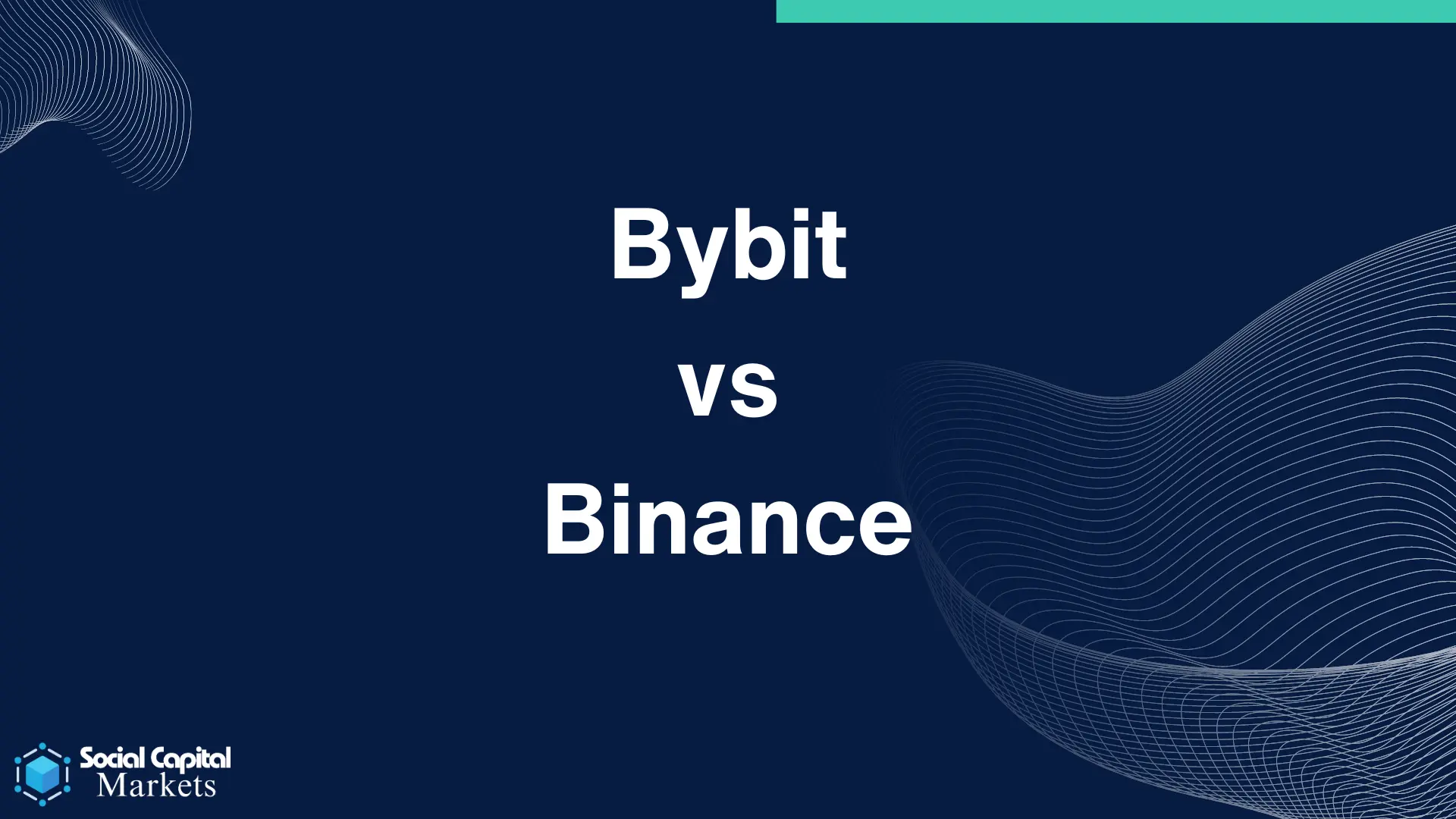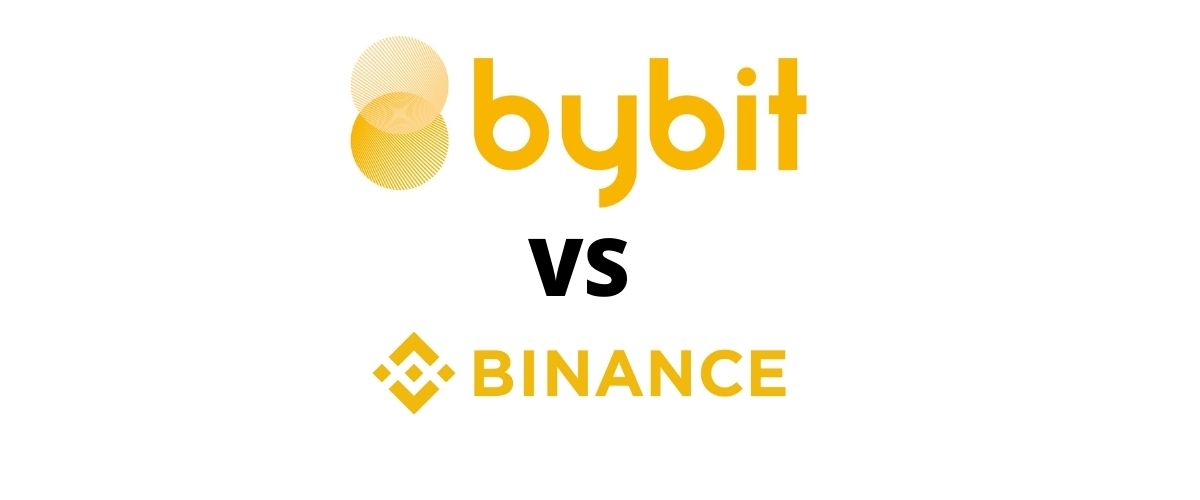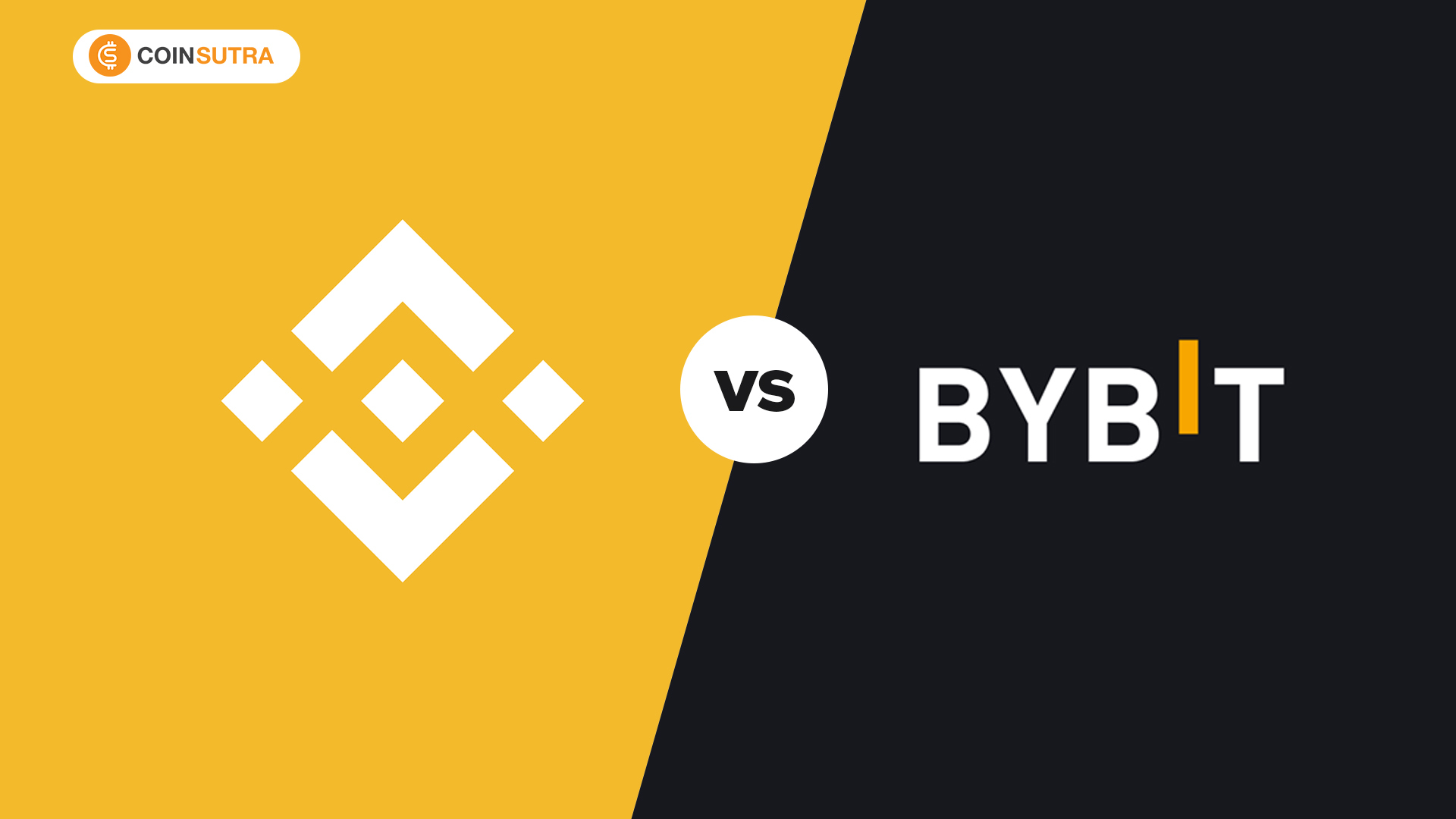When it comes to cryptocurrency trading, choosing the right platform is crucial for success and security. Among the myriad of options available, Bybit vs Binance are two giants that stand out due to their popularity, extensive features, and user base. Both platforms cater to a range of traders—from beginners to professional investors—and offer unique advantages and drawbacks. This comprehensive comparison aims to dissect every aspect of these two industry leaders, helping traders make informed decisions based on their specific needs.
In this article, we delve into the key differences and similarities between Bybit vs Binance across various dimensions such as trading features, fees, user experience, security, supported cryptocurrencies, customer support, mobile app performance, liquidity, and ultimately, which platform might be better suited for different types of traders. Whether you’re considering transitioning from one platform to another or just starting your crypto journey, understanding these nuances will provide valuable insights.
Bybit vs Binance: A Comprehensive Comparison

Before diving into the specifics, it’s essential to understand that bybit vs binance represent two distinct ecosystems with their own philosophies, strengths, and weaknesses. Binance, founded in 2017, has grown exponentially to become the largest crypto exchange by trading volume, offering an extensive range of assets, features, and services. It positions itself as a comprehensive platform with options spanning spot trading, futures, staking, savings, and even blockchain projects.
Bybit, established in 2018, is primarily known for its derivatives trading, especially perpetual contracts. While it has expanded its offerings over recent years, its core strength remains in leveraged trading and sophisticated trading tools tailored for active traders. The comparison of these two platforms reveals not only their operational differences but also their target audiences and strategic focuses.
The choice between bybit vs binance hinges on your trading style, asset preferences, security concerns, and overall platform usability. Let’s explore each aspect deeply to uncover what makes each platform unique.
Trading Features: Bybit vs Binance

Trading features are often the most critical factors influencing a trader’s platform choice. They determine how flexible, efficient, and enjoyable the trading experience is, especially under volatile market conditions. Both platforms boast robust functionalities but serve slightly different trader profiles.
Advanced Trading Tools and Order Types
Binance offers a broad spectrum of trading tools suited for both novice and expert traders. Its interface supports multiple order types—limit, market, stop-limit, OCO (One Cancels Other), and more—facilitating complex trading strategies. The advanced trading interface allows traders to execute quick trades, set triggers, and employ algorithmic trading via API integrations. Binance’s spot trading platform excels in liquidity, enabling large orders to go through with minimal slippage.
Bybit, on the other hand, specializes in derivatives trading with a focus on perpetual contracts and futures. Its platform provides powerful leverage options—sometimes up to 100x—which attract day traders and speculators aiming to maximize profits in short timeframes. Bybit also offers advanced order types like conditional orders, take-profit/stop-loss, and trailing stops, essential for managing risk during high volatility.
While Binance’s spot market is more comprehensive, Bybit’s edge lies in its derivatives market, featuring innovative features like dual-price index and cross-margin trading. Both platforms continually roll out trading tools; however, Binance’s broader ecosystem means more versatility for traders interested in diversifying their trading activities.
Margin and Leverage Options
Leverage plays a vital role in derivatives trading, significantly amplifying both potential gains and risks.
Binance provides leverage up to 125x on certain futures contracts, though it encourages responsible trading by setting maximum limits based on the asset and region. Its margin system supports isolated and cross-margin modes, giving traders flexibility to manage their funds and risk exposure effectively.
Bybit offers leverage up to 100x consistently across its perpetual contracts, with a user-friendly interface designed for quick margin adjustments. The platform emphasizes real-time risk management features, including insurance funds and automatic liquidation safeguards, to protect traders from excessive losses.
For traders who favor aggressive leverage, both platforms are competitive, but Binance’s higher leverage options may appeal more to seasoned traders comfortable with higher risk levels. Conversely, Bybit’s focus on ease of use and safety mechanisms makes it attractive for active traders seeking a balance between leverage and risk management.
Trading Interface and Usability
Ease of use can determine how quickly traders adapt and execute strategies.
Binance’s interface varies between a classic layout for seasoned traders and a simplified mode for beginners, catering to diverse user preferences. Its desktop and web platforms are highly customizable, supporting multiple charts, indicators, and real-time data streams. The platform also integrates advanced features like futures grid trading, lending, and staking, making it suitable for larger-scale operations.
Bybit’s interface is sleek, intuitive, and optimized for derivatives trading. Its clean design minimizes clutter and provides fast access to trading pairs, order books, and technical analysis tools. The platform enables traders to execute complex orders rapidly, which is crucial during volatile market swings.
Overall, Binance’s versatility suits traders who need a comprehensive environment, while Bybit’s streamlined platform appeals to traders focused primarily on derivatives and quick execution.
Fees and Charges: Bybit vs Binance

Fees are a decisive factor for many traders, especially those engaging in high-frequency or large-volume trading. Even minor differences can significantly impact profitability over time. Here, we analyze the fee structures, costs, and incentives offered by both platforms.
Trading Fees and Commissions
Binance employs a tiered fee structure based on 30-day trading volume and Binance Coin (BNB) holdings. Its spot trading fee starts at 0.1% for both maker and taker orders, with discounts available for high-volume traders and BNB stakers, sometimes reducing fees to as low as 0.02%. For futures trading, fees are similar, with Maker fees often being lower than Taker fees, incentivizing liquidity provision.
Bybit charges a flat fee of 0.075% for maker orders and 0.025% for taker orders on derivatives. Its fee model is straightforward, without the tiered discounts seen on Binance, which benefits traders with consistent trading patterns but may appear less flexible for infrequent traders. Additionally, Bybit occasionally runs promotional fee discounts and zero-fee trading events to attract new users.
Deposit and Withdrawal Costs
Binance generally offers free deposits for cryptocurrencies, but withdrawal fees vary depending on the asset. For example, Bitcoin withdrawals incur a network fee that adjusts dynamically based on blockchain congestion. For fiat transactions, Binance supports bank transfers and card payments with associated fees.
Bybit does not charge deposit fees for cryptocurrencies but applies withdrawal fees based on network charges, which are transparent and displayed beforehand. Fiat support is limited, and withdrawals typically require KYC verification, with fees varying accordingly.
Incentive Programs and Promotions
Binance frequently runs trading competitions, cashback bonuses, and referral programs that can reduce net costs or generate extra earnings. Its VIP program rewards high-volume traders with lower fees and enhanced privileges.
Bybit offers referral bonuses, demo contests, and occasional fee rebates, emphasizing simplicity and transparency. Its promotional campaigns often target derivatives traders looking for leverage and quick trading opportunities.
Summary on Fee Structures
Overall, Binance’s flexible fee model rewards high-volume traders and BNB holders, making it more cost-effective for large traders. Bybit’s straightforward fee approach and periodic promotions suit active derivatives traders seeking predictable costs. Both platforms are competitive, but your choice may depend on your trading frequency, asset preferences, and whether you prioritize fee discounts or simplicity.
User Experience: Bybit vs Binance

User experience encompasses platform design, ease of navigation, account setup process, and overall satisfaction. A seamless experience encourages traders to focus on strategy rather than platform hurdles.
Platform Design and Layout
Binance offers a highly customizable interface, supporting multiple layouts tailored for spot trading, futures, staking, and more. Its desktop version is feature-rich but can seem overwhelming for newcomers due to the sheer volume of options and data. The mobile app, however, maintains a user-friendly design with accessible menus and responsive controls.
Bybit maintains a minimalist, modern interface focusing on derivatives trading. Its design emphasizes speed, clarity, and accessibility, especially on mobile devices. The layout simplifies complex data, making it easier for traders to monitor positions, set orders, and analyze charts without distraction.
Ease of Account Setup and Verification
Both platforms require identity verification (KYC) for certain features, especially fiat transactions.
Binance’s onboarding process involves email verification, phone number confirmation, and document submission if necessary. Its multi-layered process ensures security but can be time-consuming, especially during high demand periods.
Bybit presents a straightforward onboarding process, often allowing users to start trading with minimal verification initially, with more features unlocking after completing KYC. Its emphasis on quick registration attracts traders eager to jump into trading swiftly.
Transaction and Trading Speed
Speed is critical, particularly in high-volatility markets.
Binance’s servers are optimized for rapid trade execution, with liquidity pools that support quick order fills. However, during peak times, users may experience slight delays or congestion.
Bybit prioritizes ultra-fast order matching, leveraging its proprietary matching engine to ensure minimal latency. This is especially beneficial for scalpers and high-frequency traders who rely on milliseconds.
Customer Interface and Accessibility
Both platforms excel at providing accessible interfaces, but their target audiences differ.
- Binance caters to a broad spectrum, from novices using simplified modes to professionals utilizing advanced charting tools.
- Bybit focuses on traders who want efficiency and speed, often favoring experienced traders engaging in derivatives trading.
Overall, user experience on both platforms is highly positive, but the choice depends on individual preferences—whether you value customization and diversity (Binance) or speed and simplicity (Bybit).
Security Measures: Bybit vs Binance
Security is paramount, especially given the recurring threats of hacking and fraud in the crypto space.
Security Protocols and Features
Binance employs a multi-tiered security system, including two-factor authentication (2FA), address whitelists, device management, and cold storage for most assets. It has a Secure Asset Fund for Users (SAFU) that provides an emergency insurance fund protecting users’ funds in case of security breaches.
Bybit incorporates similar security features—2FA, email alerts, withdrawal whitelist, and cold wallet storage. It also employs regular security audits and bug bounty programs to identify vulnerabilities proactively.
Past Security Incidents and Response
Binance experienced a significant hack in 2019, where hackers stole 7,000 BTC. The platform responded swiftly by activating its SAFU fund, reimbursing affected users, and improving security protocols. Its transparency in handling such incidents has reinforced user trust.
Bybit has maintained a relatively clean record, with no major breaches reported to date. Its proactive security measures have kept it resilient against attacks, although some traders remain cautious about derivatives-focused platforms due to their targeted attacks.
Regulatory Compliance and User Data Privacy
Both platforms comply with regional regulations where applicable, implementing AML/KYC procedures. Binance’s regulatory landscape is evolving, with some countries imposing restrictions, while Bybit tends to operate more flexibly in certain jurisdictions.
Data privacy policies adhere to international standards, but users should always exercise caution and enable all security features available.
Final Security Assessment
Both Bybit and Binance have implemented comprehensive security measures. Binance’s larger scale and past incidents highlight the importance of ongoing vigilance, but its swift response and insurance fund bolster user confidence. Bybit’s strong security record and proactive measures make it a reliable choice, especially for traders concerned about safeguarding their assets.
Supported Cryptocurrencies: Bybit vs Binance
The range of supported cryptocurrencies influences diversification and trading opportunities.
Asset Diversity and Range
Binance stands out with over 600 listed cryptocurrencies, covering major coins like Bitcoin, Ethereum, and Ripple, as well as numerous altcoins and tokens from emerging projects. Its extensive marketplace allows spot trading, staking, savings, launchpad participation, and DeFi integration.
Bybit offers a curated selection focusing mainly on top-tier cryptocurrencies. While its list is shorter—around 60-80 assets—it includes all major coins and popular altcoins. Bybit’s focus on high-liquidity assets ensures smooth trading and reduced slippage.
Listing Criteria and Market Reach
Binance’s rigorous listing process balances quality and diversity, aiming to list promising projects early. Its global reach in Asia, Europe, and beyond attracts a wide user base interested in a variety of digital assets.
Bybit emphasizes assets with high trading volume and proven adoption, limiting its list to minimize risks associated with new or untested tokens.
Support for Derivatives and Tokenized Assets
Binance supports tokenized stocks, futures, options, and even NFT marketplaces. Its ecosystem facilitates varied trading styles and asset classes.
Bybit primarily focuses on derivatives, including perpetual contracts on cryptocurrencies, with some tokenized assets but fewer options compared to Binance.
Summary on Supported Cryptocurrencies
If diversification across a vast array of assets is vital, Binance is the clear leader. For traders interested mainly in high-liquidity, blue-chip cryptocurrencies and derivatives, Bybit provides a solid, focused selection. Your choice hinges on whether you prioritize breadth or depth.
Customer Support: Bybit vs Binance
Effective customer support enhances trust and helps resolve issues swiftly, impacting overall user satisfaction.
Support Channels and Responsiveness
Binance offers multi-channel support, including live chat, email, help center articles, and community forums. Its live chat support is responsive, but during peak periods, wait times can increase.
Bybit emphasizes prompt customer service through 24/7 live chat and email support. Its ticketing system is designed to handle queries efficiently, and it maintains a comprehensive FAQ section.
Quality of Assistance and Resolution Time
Binance’s support quality varies; many users report satisfactory resolutions, but some have experienced delays during high-traffic periods. Its multilingual support improves accessibility globally.
Bybit generally receives positive reviews for quick responses and helpful interactions, especially for derivative-specific issues. Its dedicated support team often resolves most queries within hours.
Educational Resources and Community Engagement
Both platforms invest in educational content—tutorials, webinars, and news updates—to help users navigate their services. Binance’s broader ecosystem enables more extensive educational initiatives, while Bybit’s resources tend to focus on derivatives trading techniques.
Overall Support Experience
In summary, Binance’s support infrastructure caters to a larger user base with diverse needs, but response times can fluctuate. Bybit’s support is characterized by responsiveness and clarity, making it ideal for traders requiring quick assistance.
Mobile App Performance: Bybit vs Binance
Mobile platforms are vital for traders who need on-the-go access to markets, especially during volatile swings.
App Design and User Interface
Binance’s mobile app mirrors its desktop complexity, offering a full suite of features, including spot and futures trading, staking, savings, and more. Its interface is customizable, with multiple themes and layouts.
Bybit’s app adopts a sleek, streamlined design emphasizing derivatives trading. Its minimalist UI simplifies navigation and offers fast access to key functions like order placement and position monitoring.
Performance and Stability
Both apps are optimized for stability, with Binance experiencing occasional lag during high traffic. Its extensive features may sometimes lead to slower loading times.
Bybit, focusing on speed and simplicity, offers almost instant response times, crucial for traders executing rapid trades or managing positions actively.
Compatibility and User Feedback
Both apps are compatible with iOS and Android devices, regularly updated for security and feature enhancements.
User feedback indicates high satisfaction with Bybit’s app due to its reliability and ease of use, whereas Binance’s app appeals more to users needing comprehensive tools on their mobile devices.
Final App Evaluation
Your choice depends on your trading style—if you prefer deep feature sets and customization, Binance’s app is suitable. For quick, straightforward derivatives trading, Bybit’s app shines.
Liquidity Analysis: Bybit vs Binance
Liquidity is fundamental for efficient trading, allowing large orders to execute without affecting the market price adversely.
Trading Volume and Market Depth
Binance boasts the highest trading volume among exchanges worldwide, with deep liquidity pools across most asset pairs. Its extensive user base and global reach ensure that large trades can be executed smoothly with minimal slippage.
Bybit maintains high liquidity within its derivatives market, especially for Bitcoin and Ethereum perpetual contracts. Its order book depth is sufficient for most professional traders, but not as extensive as Binance’s.
Impact on Trading Strategies
High liquidity reduces the risk of slippage and allows for precise entry and exit points—key for scalping, arbitrage, and high-frequency trading.
Binance’s superior liquidity makes it preferable for substantial trades, long-term investments, and diversified portfolios.
Bybit’s liquidity is adequate for derivatives trading, but traders dealing with lower-volume assets might face slippage.
Market Stability and Price Discovery
Stable markets with high liquidity foster accurate price discovery, minimizing manipulation risk.
Binance’s massive trading volume ensures continuous, transparent price formation.
Bybit benefits from its niche in derivatives, where prices are closely tethered to spot markets yet susceptible to sudden movements during news events.
Summary of Liquidity Factors
For traders prioritizing liquidity, especially in spot markets, Binance stands out. Bybit offers sufficient liquidity for derivatives and major cryptocurrencies, making it a dependable platform for active trading but with some limitations in less popular pairs.
Conclusion: Choosing Between Bybit and Binance
Navigating the bybit vs binance debate boils down to aligning platform strengths with your trading goals. If your focus is on a vast array of cryptocurrencies, diversified investment options, and extensive features—especially in spot trading—Binance emerges as the comprehensive choice. Its global reputation, unmatched liquidity, and multifunctional ecosystem make it suitable for both beginners and seasoned traders seeking variety.
Conversely, if your primary interest lies in derivatives, leverage, and rapid order execution with an intuitive interface, Bybit serves as an excellent platform. Its specialized tools, security focus, and streamlined experience appeal to active traders who prioritize speed and efficiency.
Ultimately, both platforms are secure, innovative, and capable of supporting various trading strategies. Your decision should consider your preferred asset classes, trading style, security comfort level, and desired user experience. Whichever you choose, understanding the intricacies discussed in this bybit vs binance comparison will empower you to optimize your trading journey in the dynamic world of cryptocurrencies.
Selecting the optimal cryptocurrency trading platform involves analyzing numerous factors such as trading features, fees, user experience, security, asset availability, support, and liquidity. Binance and Bybit exemplify different strengths—Binance with its extensive ecosystem and broad asset coverage, and Bybit with its focus on derivatives, speed, and user-centric design. Carefully evaluating your trading objectives and preferences will guide you toward the platform that best aligns with your strategy, helping you navigate the complex, fast-paced world of crypto trading confidently.